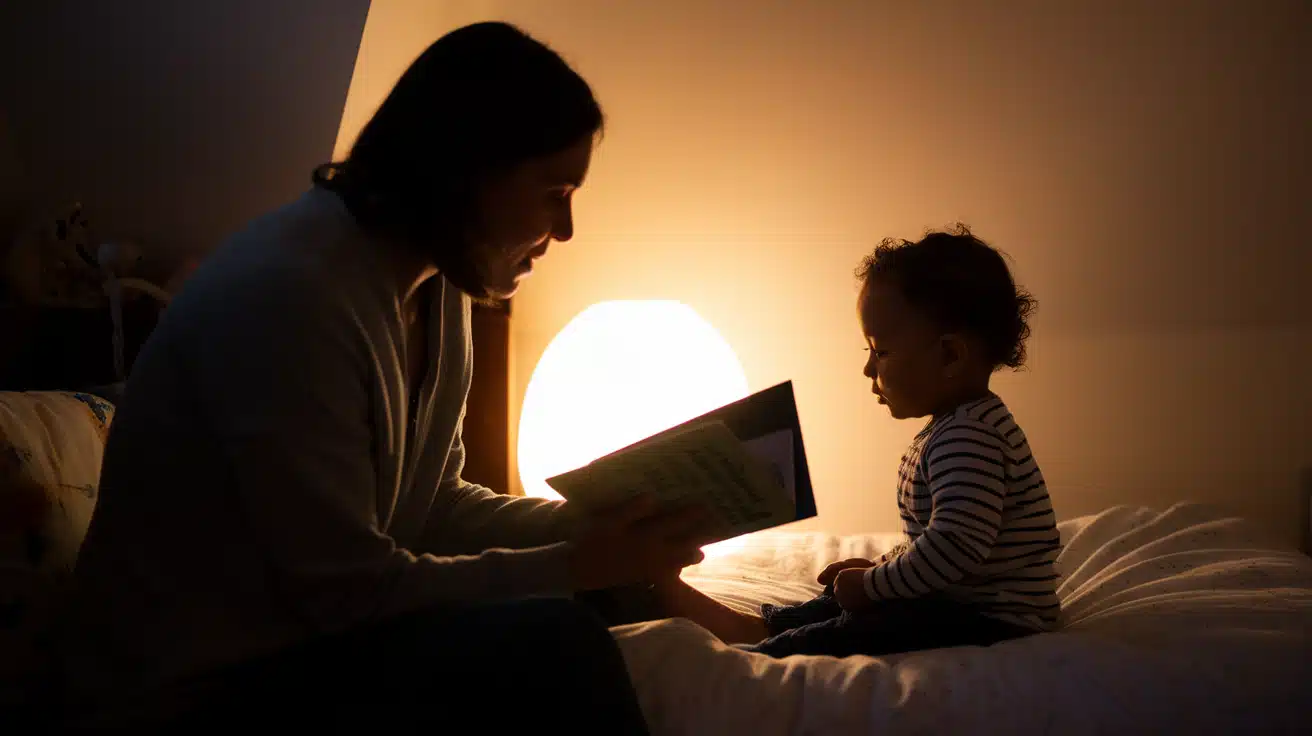Getting your toddler to sleep is hard enough, but when daylight savings hits and the clocks fall back, it can turn your little one’s sleep schedule upside down.
Like many parents, I’ve dealt with 4 AM wake-ups and mid-day nap battles during this seasonal shift.
But don’t worry – with some simple planning and the right strategies, you can help your child adjust to the changes in time smoothly and maintain healthy sleep habits.
I’ll share proven methods for gradually shifting bedtimes, maintaining routines, and creating the perfect sleep environment for your toddler.
You’ll also learn exactly what to do when early wake-ups or nap troubles occur during the transition.
How to Help Your Toddler Sleep Better Tonight
Parents need quick fixes when a time change looms. Here are the key steps you can take right now to help your toddler sleep better during the fallback time.
1. Gradual Bedtime Adjustment
Start small changes before the time switch arrives. Here’s how:
- Move bedtime 10 minutes later each night for a week
- If your child goes to bed at 7:00 PM, aim for 7:10 PM on day one
- Keep adding 10 minutes until you reach the new time
- Watch for tired signs and adjust as needed
2. Consistent Morning Routine
Keep mornings steady to help your child feel secure:
- Wake up at the same time each day
- Open curtains right away to let in morning light
- Start breakfast at the usual time
- Follow the same steps in the same order
3. Create A Sleep-Friendly Environment
Make your child’s room perfect for rest:
- Put up dark curtains to block extra light
- Set up soft, steady background sounds
- Keep the room at a good sleeping temperature (68-72°F)
- Remove distracting toys from the bed
These quick fixes can greatly improve your toddler’s handling of the time change. The key is to start early and stay steady with your changes.
Step-by-Step Guide To Help Your Toddler Adjust
Step 1: Gradually Adjust Nap Times
Just like bedtime, naps need a gradual adjustment.
To help maintain a consistent sleep schedule, shift nap times earlier by 10-15 minutes each day before the time change.
Step 2: Limit Screen Time Before Bed
Screens can interfere with the production of melatonin, the hormone that promotes sleep.
To combat this, avoid screens at least an hour before bedtime. Instead, opt for calming activities like reading a book or quiet play.
Step 3: Offer Extra Comfort And Reassurance
During this adjustment period, your toddler may feel restless or more anxious.
Offer extra cuddles, soothing words, or a favorite stuffed animal to create a sense of comfort and security.
Common Sleep Problems During Fall Back Time (And Solutions)
| Sleep Problem | Solution |
|---|---|
| Early Wake-Ups | Gradually adjust wake-up time with quiet morning activities like reading. |
| Bedtime Resistance | Stick to a consistent bedtime routine and include calming activities like a warm bath. |
| Shorter Naps | Adjust nap times incrementally and ensure a dark, quiet nap environment. |
| Frequent Night Wakings | Offer extra comfort with cuddles or soothing words during night awakenings. |
Extra Tips For A Smooth Transition
1. Adjust Meal Times
Move meals slowly to match the new schedule. This helps your child’s body adjust better. Try these steps:
- Push breakfast 10 minutes later each day
- Keep snacks at set times
- Make lunch and dinner times match the new schedule
- Avoid big meals right before bed
2. Increase Outdoor Time
Morning light helps fix sleep timing. Get outside with your toddler:
- Play in the yard after breakfast
- Take a morning walk
- Visit a park before lunch
- Spend at least 30 minutes in daylight
Keep afternoon play calm. Too much running late in the day might make bedtime harder.
3. Be Patient And Flexible
Your toddler needs time to learn this new pattern. Remember:
- Each child adjusts at their own speed
- Some days might be harder than others
- Keep your routine steady
- Small changes add up over time
- Stay calm when plans don’t work
Most children take one to two weeks to feel normal again. Therefore, it is important to continue following your plan even when it seems difficult.
When To Seek Professional Help If Sleep Struggles Persist
Most toddlers adjust to time changes within two weeks. If your child cries at bedtime, fights naps, or stays tired after this period, they may need extra support.
Watch for ongoing patterns. When your toddler shows changes in sleep, eating, or mood lasting over two weeks, consult their doctor.
Pay attention to sleep signs like loud snoring or odd breathing. Your child’s doctor can spot issues and suggest helpful solutions.
Getting help shows that you value your child’s sleep health. A doctor can create a plan to help your whole family rest better.
Conclusion
Time changes test both parents and toddlers. The fallback switch brings early mornings and mixed-up schedules, but small steps make big gains.
Moving bedtime in tiny bits, keeping morning times steady, and making the room just right for sleep sets your child up for success.
Your child’s body needs time to learn new patterns. While some kids adjust quickly, others might take two weeks to feel normal again.
Stay calm and maintain your routine during the change. If your child’s sleep troubles last longer than two weeks, your child’s doctor can offer more help.
Remember, your steady support helps your toddler feel safe as they learn this new schedule.
Soon enough, you and your little one will find your rhythm again.













